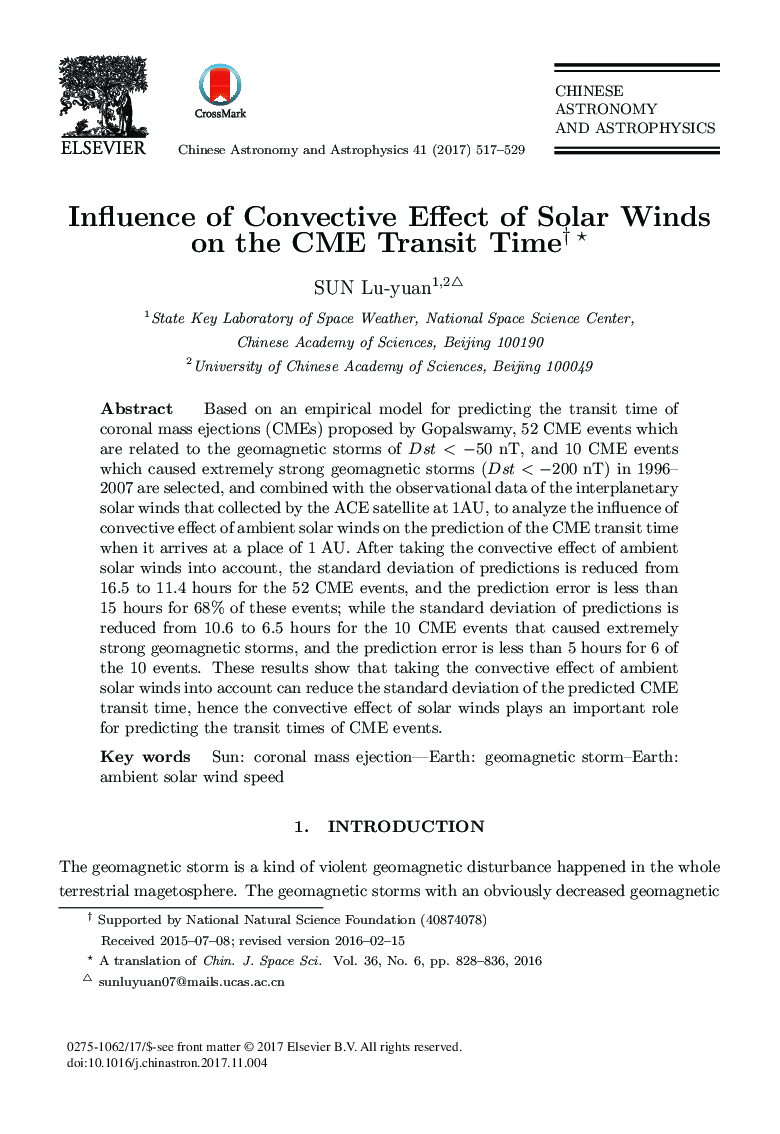| Article ID | Journal | Published Year | Pages | File Type |
|---|---|---|---|---|
| 8133190 | Chinese Astronomy and Astrophysics | 2017 | 13 Pages |
Abstract
Based on an empirical model for predicting the transit time of coronal mass ejections (CMEs) proposed by Gopalswamy, 52 CME events which are related to the geomagnetic storms of Dst < â50 nT, and 10 CME events which caused extremely strong geomagnetic storms (Dst < â200 nT) in 1996- 2007 are selected, and combined with the observational data of the interplanetary solar winds that collected by the ACE satellite at 1AU, to analyze the influence of convective effect of ambient solar winds on the prediction of the CME transit time when it arrives at a place of 1 AU. After taking the convective effect of ambient solar winds into account, the standard deviation of predictions is reduced from 16.5 to 11.4 hours for the 52 CME events, and the prediction error is less than 15 hours for 68% of these events; while the standard deviation of predictions is reduced from 10.6 to 6.5 hours for the 10 CME events that caused extremely strong geomagnetic storms, and the prediction error is less than 5 hours for 6 of the 10 events. These results show that taking the convective effect of ambient solar winds into account can reduce the standard deviation of the predicted CME transit time, hence the convective effect of solar winds plays an important role for predicting the transit times of CME events.
Keywords
Related Topics
Physical Sciences and Engineering
Physics and Astronomy
Astronomy and Astrophysics
Authors
Sun Lu-yuan,
